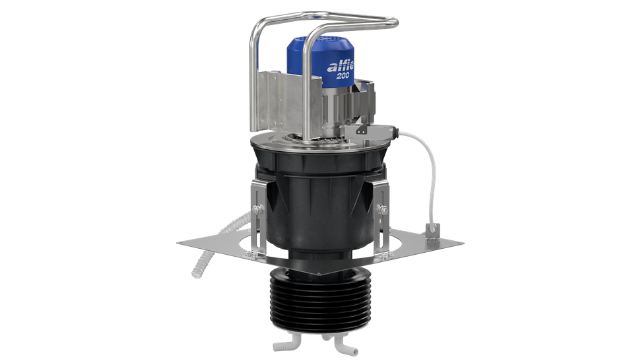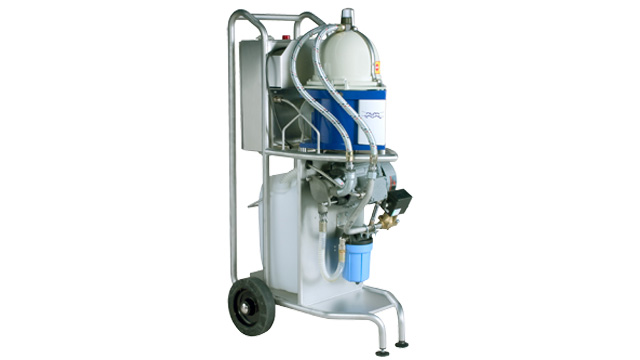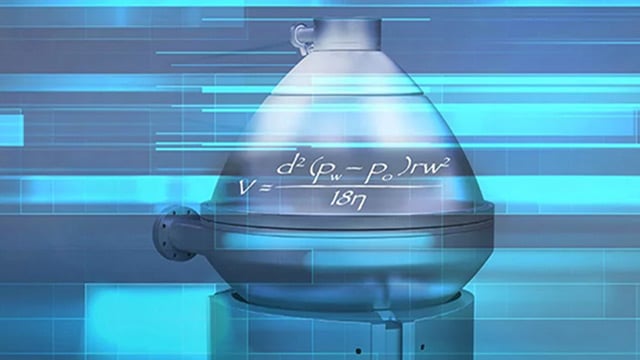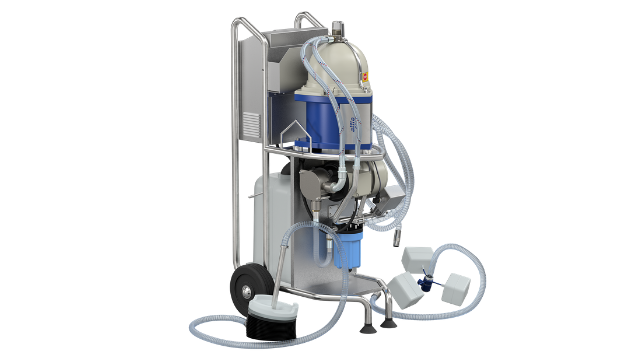Alfie
Industrial coolants are used widely throughout the metalworking and manufacturing industry. Minimise coolant disposal costs with the Alfie coolant treatment. Removing tramp oil and other contaminants such as fine metal shavings also protects expensive cutting tools in CNC machines and improves product quality in precision engineering.
Reduce waste and disposal cost with the Alfie coolant treatment
- Reduced tool wear, fewer rejects, and overall improvement in quality
- Cleaning can proceed both during production and when the equipment is idle
- Eliminate odour from bacterial growth
- Reduce risk of allergic reactions
- Environmental and sustainability benefits
The Alfa Laval Alfie coolant cleaners are a proven way to use your coolant at least 3-5 times longer. This dramatically reduces the volume of waste coolant to be sent to disposal and waste management facilities.
We used to replace the coolants in every machine twice annually. The cost, not least for disposal, was significant. We finally got the chance to test the Alfie 500. During the test period, we also checked out alternative technologies for coolant cleaning. We soon found out, however, that high-speed centrifugal separation was the most efficient method for the removal of tramp oils and contaminants.
- European metalworking customer
Meet the Alfie range of centrifugal separators for coolant treatment
The Alfie range of compact high-speed centrifugal separators makes it easy to significantly reduce all such costs by keeping coolants clean, and do so in the most cost-effective way possible. Alfie units can be linked to a bypass flow, ensuring less downtime for service. In addition, fewer man-hours are required for maintaining service fluids. An Alfie separator plays a key role in ensuring longer tool service life and cleaner components, thus improving end-product quality.
The Alfie range currently consists of two different units:
Alfie 200

The Alfie 200 is designed for mounting on top of coolant tanks, and is fitted with a bellows that automatically adapts the inlet to the level of fluid in the tank.
Alfie 500

The Alfie 500 is a compact, wheeled separator system that the operator can move from one tank to another. The PLC-based control system is easy to use, and special couplings make it easy to connect and disconnect the hoses quickly when moving the cleaning unit around.
Benefits
Reducing costs by extending coolant life
You need only top off the tank with fresh coolant to compensate for evaporation and normal carry out on the end product. Under normal circumstances, you can assume that a centrifugal separator will extend your coolant’s working life by at least three to five times. And you save money not only because you need to buy less coolant, but you need to dispose of less, too.
Reduces tool wear and improves processing quality
Tramp oil on tools and the components being processed usually decreases processing precision and can also cause problems in later stages of production, such as painting. This problem simply disappears if a centrifugal separator is used. Since the coolant is kept clean, tramp oil and particles cannot adhere to surfaces. This simplifies clean-up and, more importantly, produces better quality results.
An end to unpleasant odours and health problems
The oil that leaks out during machining is flushed away by the coolant and ends up in the tank. There it sits like a lid on the surface of the coolant, creating ideal conditions for the growth of anaerobic bacteria – bacteria that do not require oxygen. The unpleasant odour that sometimes develops in engineering workshops results from the hydrogen sulfide gas that’s formed when these bacteria have been allowed to multiply freely in the tank. This problem is eliminated by a centrifugal separator, since the tramp oil is drawn off and pumped into a collection tank. Some people develop allergies or skin problems when they come into contact with various types of oils, which means that the separator’s ability to remove tramp oil can lead to significantly improved health for machine operators.
How it works

In a centrifugal separator, the gravity that causes separation in traditional settling tanks is replaced with a centrifugal force that can be more than 5,000 times stronger. Naturally, this makes separation significantly faster and more efficient.
If buffer plates are added to a settling tank, the sinking of any particles stops sooner, and there is a greater surface area onto which they will fall, helping speed up the separation process. In a centrifugal separator, the same basic principle can be applied, and a corresponding increase in effectiveness achieved, by a stack of special discs.
The centrifugal force presses the heavy particles outwards against the walls of the separator, whereas any lighter particles present tend to follow the liquid phase towards the centre. The disc stack prevents them from doing so, however, making the lighter particles change direction and end up with the heavy particles close to the outer wall.
This makes centrifugal separators an effective way to remove particles as well as easily separating out different liquid components in the feed flow.
Coolant treatment FAQ
Coolants are widely used in metal working and CNC (Computer Numerical Control) cutting processes to reduce friction, prevent corrosion and remove fine metal shavings.
What is coolant treatment?
The unique chemical composition of coolant emulsions – together with a shift towards more environmentally friendly water-based products – makes it prone to contamination and degradation. Coolant that is not cleaned becomes progressively more contaminated to the point where total replacement becomes necessary.
Disposal of used coolants is costly due to strict environmental regulation and is normally handled by specialised waste management companies in Australia.
Filtration is one way of coolant treatment for removal of tramp oil and metal shavings. However cloth filters are fiddly to use and themselves present a disposal problem.
Centrifugation which works with G-force to achieve solid-liquid separation presents a faster and more efficient way for coolant treatment between processes and even during production. Continuous cleaning with a centrifuge extends the life of your coolants and, with top-ups, it can last as long as 10 years!
Why is my coolant collection tank so smelly?
The oil that leaks out during machining is flushed away by the coolant and ends up in the tank. There it sits like a lid on the surface of the coolant, creating ideal conditions for the growth of anaerobic bacteria – bacteria that do not require oxygen. The unpleasant odour that sometimes develops in engineering workshops results from the hydrogen sulphide gas that’s formed when these bacteria have been allowed to multiply freely in the tank.
This problem is eliminated by a centrifugal separator, since the tramp oil is drawn off and pumped into a collection tank. Some people develop allergies or skin problems when they come into contact with various types of oils, which means that the separator’s ability to remove tramp oil can lead to significantly improved health for machine operators.
How do coolant contamination and tramp oil affect tool wear?
Metalworking and CNC machine cutting and drilling tools are expensive. The fine metal shavings that accumulate in the coolant can damage the tools over time. Tramp oil on tools and the components being processed usually decreases processing precision and can also cause problems in later stages of production, such as painting.
The centrifugal separator effectively removes even fine metal shavings and particles (down to 1 μm) from the coolant, resulting in reduced tool wear, fewer rejects, and an overall improvement in quality. Since the coolant is kept clean, tramp oil and particles cannot adhere to surfaces. This simplifies clean-up and, more importantly, produces better quality results.
The Separator Innovator
Would you like to know more about our innovations in separation technology? Click on the link below. Alfa Laval invented the first disc stack separator and has led the way in the development of centrifuge technology for over a century. We are glad to share with you the expertise we have gained along the way. Visit our Separator Innovator knowledge base to learn more about advancements in separation and the steps Alfa Laval is taking to continue revolutionizing the technology.


